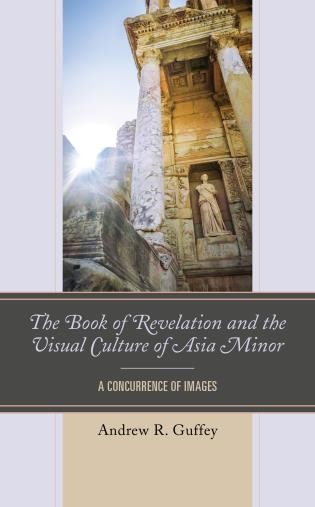The Rev. Daniel DeForest London, PhD
Every Fourth Sunday of Easter, Episcopalians and Anglicans read a portion of the Good Shepherd discourse in John 10. In Theodicy and Spirituality in the Fourth Gospel, I argue that this discourse functions as part of Jesus’s response to the question of suffering as asked by the disciples in the previous chapter: “Rabbi, who sinned, this man or his parents, that he was born blind?” (9:2). Sandra Schneiders explains that “the disciples are Christians of any time who agonize over the meaning of life’s mysteries, e.g. innocent suffering, and turn to Jesus for enlightenment” (Schneiders, Written That You May Believe, 157). The disciples’ question invites readers to bring their own questions of suffering to the Johannine Jesus, whose multi-layered response I attempt to unpack in my book.
In John 9 – 10, Jesus does not offer a theodicy, a philosophical defense of God in the face of suffering. Rather, the Gospel of John offers what I call a theodical spirituality, which is the experience of praying the question of suffering and receiving a divine response. In the response, Jesus reveals our dangerous attachment to blaming the victim and scapegoating the innocent (John 9:3-4). He then presents three sets of dichotomous symbols (day/night, vision/blindness, sheep/wolf), which each include metaphors (Light, Judge, Shepherd) that subvert the dichotomy and reveal Jesus’s commitment to liberating both the victim and victimizer. This reading ends up challenging all the dichotomies and dualisms that seem to dominate the Fourth Gospel.
I highlight cues within the narrative that invite the reader to identify not only with the disciples but also with the Pharisees, the Ioudaioi, as well as the oft-overlooked “wolf,” which is featured on the book’s cover. By identifying with the interrogators in the narrative, the reader can begin to see his or her own complicity in systems of scapegoating violence and Jesus’s commitment to dismantling them. Building on the insights and categories of Johannine scholar Adele Reinhartz and philosopher René Girard, I use what I call the “anthropological tale” of the Gospel as a key to interpreting the Johannine symbols and metaphors within the pericope and to demonstrate how anti-Jewish readings of John prove antithetical to the Gospel message.
When the Ioudaioi ask Jesus, “How long will you keep us in suspense?” (John 10:24) their words hearken back to the disciples’ initial question of suffering, especially since their first two words echo the classic question of biblical lament: “How long?” (Psalm 13:1-2; 94:3; Habakkuk 1:2; Revelation 6:10). In fact, a more literal translation of their question is “How long will you steal away our breath?”, which is an especially poignant question today as COVID-19 continues to steal away people’s breath and claim millions of lives.
Like the disciples in John 9, the Jews in John 10 represent all those who boldly bring their questions of suffering before God, from Job to Julian of Norwich to C. S. Lewis to Elie Wiesel. John’s Gospel not only invites readers to bring their own questions of suffering to God, but the Gospel also invites readers to be transformed by the divine response of the Good Shepherd, who instead of offering an explanation, offers himself. As Anglican theologian Austin Farrer put it, “God does not give us explanations; God gives up a Son” (Farrer, The Essential Sermons, 204).
Ultimately, the beloved discourse read on Good Shepherd Sunday takes on new levels of meaning when we understand it as Christ’s self-giving response to our own personal questions of suffering, questions that can sometimes be laced with our own wolfish rage.
Daniel DeForest London (Ph.D., Graduate Theological Union) is the rector of Christ Episcopal Church in Eureka CA. He teaches at Church Divinity School of the Pacific and is the author of Theodicy and Spirituality in the Fourth Gospel (Fortress Academic), which was recently released in paperback. He and his wife live with two Yorkshire Terriers, one of which is named Gubbio, after the violent wolf whom St. Francis tamed.

